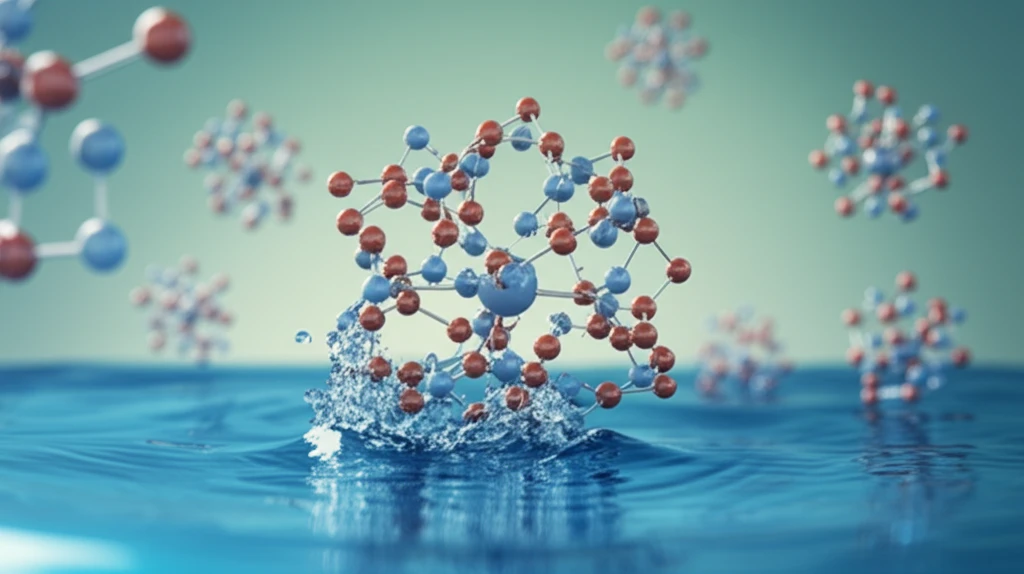
Super Catalyst: The Wheel-Like Molecule Revolutionizing Oxygen Transfer
"Unlock Cleaner Chemistry with a Groundbreaking Water-Soluble Catalyst"
For years, scientists have been captivated by titanium-based catalysts, especially since the spotlight on titanium silicalite-1 (TS-1). These catalysts have become indispensable in a variety of oxidation processes, from making propylene oxide to refining the building blocks of pharmaceuticals. But the quest for even better catalysts—those that are more efficient, stable, and environmentally friendly—never stops.
In the bustling field of catalytic research, titanium peroxo complexes (TPCs) have emerged as promising contenders. Scientists have successfully isolated a multitude of TPCs, which include titanium salalen, polyoxometalate, citrate, and glycollate. While these complexes have shown high catalytic performances for various oxidations, they typically host no more than four peroxo groups. However, Sharpless asymmetric epoxidation, a cornerstone reaction, relies on the Ti(O-i-Pr)4/chiral dialkyl tartrate complex. Surprisingly, direct isolation of tartrato peroxotitanium complexes remained elusive until now.
A team of researchers have achieved a significant milestone: the creation and isolation of a novel wheel-like cluster called icosanuclear peroxotitanate. Known scientifically as K16[Ti20(μ-O)8(HO2)8(O2)12(R,R-tart)12]·52H2O (1), this water-soluble catalyst is stabilized by tartrate molecules and stands out as the largest peroxotitanate reported to date. What makes it special? It features an impressive twenty (hydro)peroxo groups, each playing a crucial role in its catalytic activity. This breakthrough marks a pivotal moment, offering a well-defined titanium peroxide complex ready for homogeneous catalysis, detailed mechanism studies, and insights into more sustainable chemistry.
What Makes This New Peroxotitanate a Game Changer?

The real magic of K16[Ti20(μ-O)8(HO2)8(O2)12(R,R-tart)12]·52H2O lies in its unique structure and behavior. Unlike existing titanium complexes, this molecule assembles itself into a 'wheel' shape, offering unprecedented stability in both liquid and solid forms. This structural integrity is critical for maintaining its catalytic properties under various reaction conditions. With 20 (hydro)peroxo groups, this complex has three coordination modes (μ-η¹:η², μ-η²:η², and η²), allowing it to engage in reversible elimination and addition of peroxo groups—a feature that enhances its ability to catalyze reactions more effectively.
- High Symmetry: At its core, the anionic {Ti20} unit boasts a 4-fold symmetry, composed of four repeating subunits: [Tis(μ-O)2(HO2)2(O2)3(R,R-tart)3]2-.
- Wheel-Like Shape: The titanium atoms form a backbone shaped like a wheel, measuring 11.9 Å in diameter and 9.3 Å in height, capped with tartrate molecules.
- Coordination Variety: The (hydro)peroxo groups coordinate in three distinct ways (μ-η¹:η², μ-η²:η², and η²), crucial for the complex's reactivity.
The Future of Catalysis is Here
The creation of this wheel-like icosanuclear peroxotitanate marks a significant leap forward in the field of catalysis. Its unique structure, stability, and efficiency offer new possibilities for designing catalysts that are not only effective but also environmentally sustainable. As research progresses, this innovative catalyst promises to play a key role in the development of cleaner and more efficient chemical processes, paving the way for a greener future.
